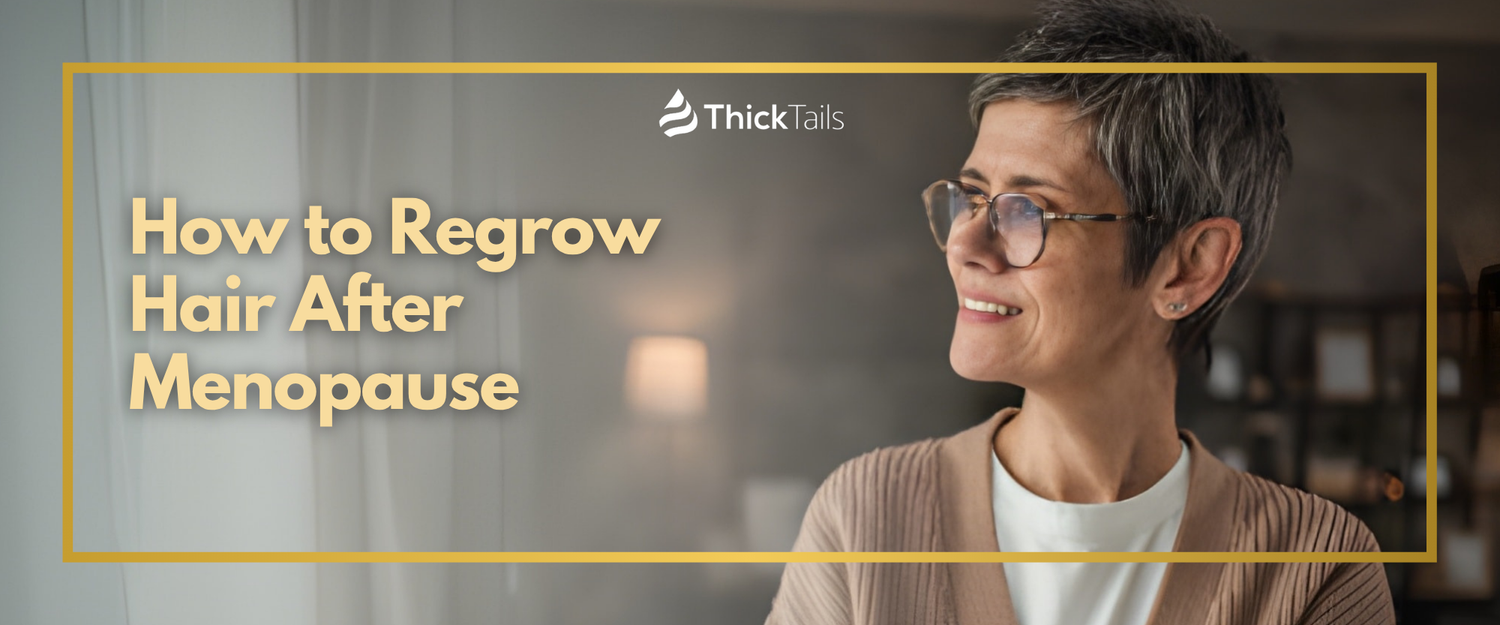If you have oily hair, you know the feeling of never-ending greasiness. You might feel like you need to shampoo constantly, but even then your hair never feels truly clean. If this sounds familiar, don't worry - you're not alone. Many women experience oily hair, especially during times of hormonal imbalance such as menopause, stress or postpartum recovery. But there is hope! There are actually a few natural ways to help balance oil production and get your hair back to its healthy state. Read on to learn more.
Start by switching your shampoo to one that is specifically made for oily hair.

Changing your shampoo to one designed for oily hair is the first step in controlling and managing greasy roots. Look for shampoos made with natural or organic ingredients such as tea tree oil, witch hazel or apple cider vinegar that can help keep your scalp balanced and free of excess oil. Additionally, proper washing technique is important as not-so-gentle scrubbing can lead to a greasy scalp. Use lukewarm water rather than hot, rinse thoroughly, and use light movements when massaging the shampoo. For additional control of an oily scalp, consider using a deep-cleansing switch on alternate washes or try implementing a specific routine that fits your needs. With the right shampoo and some good hair care practices, you can quickly have healthier, more manageable locks.
Try using a vinegar rinse once a week in place of your regular shampoo.
A great way to care for hair and establish a hair care routine is to use a vinegar rinse once a week. The acidic properties of vinegar make it excellent at removing product buildup and residue from hair, leaving it looking shinier and softer than before. Start by mixing 1 part apple cider vinegar with 4 parts water, then use the solution after shampooing. While the hair is still wet, massage the mixture into the hair and scalp, making sure to avoid the eyes at all costs. Leave it in for three minutes then rinse hair with warm water. For an extra deep cleanse, add an optional hair scrub to your weekly regimen.
Get a trim every six to eight weeks to get rid of split ends and help keep your hair healthy overall.
Having a regular haircut or trim every six to eight weeks is an important part of keeping your hair healthy. Allowing too much time in between trims can lead to split ends, which makes it difficult to style and maintain healthy, beautiful hair. Regular trims also help keep your hair looking fresh and vibrant by removing any dry, damaged ends that have built up over time. In addition to getting a trim every few weeks, using nourishing shampoos and conditioners, along with treatments like deep conditioning masks, are essential components of a healthy hair care routine. By following these simple tips, you can help sustain strong, luscious locks all year long!
Avoid using heat styling tools as much as possible, or at least use them on the lowest setting possible.
It is important to be mindful of how often and at what temperature heat styling tools, such as curling irons, straighteners, and blow dryers are used. Heat can easily damage the hair if not used properly. Whenever possible brush and comb the hair to work out any knots or tangles instead of using a heated tool. If necessary, it is highly recommended to stick to the lowest setting when using heat-styling equipment. It may take a little more effort and time but it can help protect the length, texture, and shine of your hair in the long run.
Use oil-absorbing products such as dry shampoo or cornstarch to help control oil throughout the day.
Oily skin can be difficult to manage and keep under control during the day, but with the help of oil-absorbing products, it is possible to maintain a mattifying effect. Dry shampoo is ideal for absorbing excess oil without disturbing your hair styling. The components of dry shampoo work together to remove dirt and oil without having to use actual cleansing water. Cornstarch is another good option as a natural product that effectively absorbs both oil and moisture on the skins surface. When used in combination with a blotting paper or tissue, these oil-absorbing agents will help keep your skin looking fresh and free from excess shine throughout the day.
Wash your pillowcase regularly, as oil from your hair can transfer onto it while you sleep and cause breakouts.

Taking care of your skin is an important part of overall health and wellness. One often overlooked factor in skin care is regularly washing your pillowcase, as it can accumulate oil from your hair while you sleep. These oil can easily transfer to our skin, clogging pores and causing breakouts. To protect against this, it is important to clean your pillowcases at least once a week - simply throwing them into the laundry with your normal towels will do! Making this extra effort to keep our pillows free from dirt and oil could have a real impact on our overall skin health.
All in all, there are plenty of measures you can take to control your oily hair. By following a few simple steps, such as switching to a shampoo made for oily hair and avoiding heat styling tools, you can keep your locks looking and feeling healthy. Moreover, regular trims will help get rid of any split ends while adding body and bounce to your style. Don’t forget that oil-absorbing products like dry shampoo or cornstarch will also help manage oil throughout the day, and washing your pillowcase regularly will protect you from unwanted breakouts caused by transferring oil from your hair. With these tips in hand, you’ll have no trouble mastering the art of managing oily hair!








